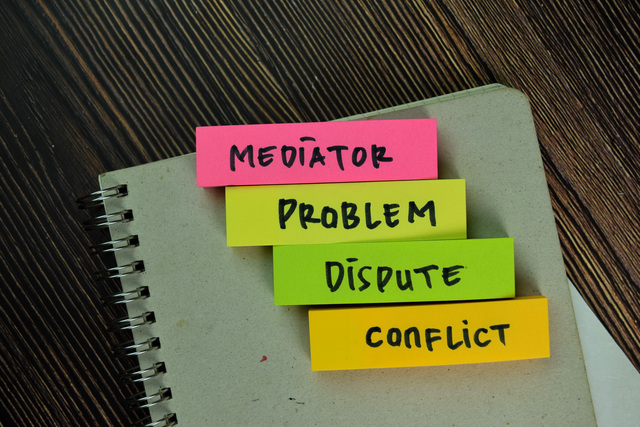How to resolve a conflict in the workplace? Think of it as the ultimate workplace navigation dance to break down barriers. Conflict is as inevitable as someone heating up fish in the office microwave, but good leaders know how to handle it with flair including clarity and decisiveness, without forgetting empathy in the equation!.
Consider this scenario…. Your team is passionately debating a project, and things get heated. A savvy leader does not just swoop in like a superhero to quieten things down. No, they dig in deeper with intentionality to figure out what is really ruffling feathers to lead everyone to a peaceful, productive middle ground.
A good leaders does not just put out fires, rather, they use the sparks to light up new ideas and create a stronger team. They turn potential chaos into an opportunity for growth, ensuring the workplace vibe stays positive and productive. This article explores 6 tips savvy leaders adopt.
Effective Leadership Skills
There are at least 6 must have leadership skills if you want to be effective in conflict resolution. These are :
Setting Boundaries
To prevent conflicts, clear rules about acceptable behavior must be established. For example, a leader may set a guideline that meetings should focus strictly on work-related topics and not personal issues. This ensures everyone understands the expectations, reducing the risk of uncomfortable or inappropriate conversations that could lead to conflict.
If a team member begins discussing personal matters during a meeting, the leader can gently remind them of the guideline, keeping the team focused and avoiding potential disputes. team members can collaborate more effectively, staying on task and getting the job done.
Active Listening
The leader must completely focus on understanding the employees thoughts expressed as words and their accompanying emotions. No butting in and cutting off sentences here! Just listen.
When employees disagree, a leader should ask open-ended questions to elicit information rather than “Yes” or “No” answers. Always acknowledge the feelings and concerns of everyone FIRST to build trust and create a comfortable environment where employees can express their concerns safely and without judgement.
Mediation

To handle disputes effectively, a good leader or manager listens to help the employees or team provide the solutions themselves by focussing on common ground. This way, everyone feels that they have been heard and are respected.
Furthermore this is an opportunity to demonstrate respectful and effective communication themselves while mediating with empathy and compassion. Using this approach will also help boost the morale of the team.
Establishing Common Goals
Leaders who can navigate toward a shared vision, will help everyone work in harmony to only prevent potential conflicts and create a strong sense of community and purpose.
When everyone know and understand their roles and responsibilities before the start of a project, it will ensure that there will be no issues later due to overlap in roles. By also bringing the team together to set clear goals will help minimise disagreements over individual approaches.
Collaborative Problem-Solving
Good leaders often convene with their team to address challenges when they encounter problems. They encourage discussion of each members’ perspective to come up with a consensus solution while problem-solving.
Fairness and Consistency
Effective leaders handle conflicts by treating everyone equally and applying rules consistently.
Managers who stick to clear rules when resolving conflicts promote an environment where everyone understands how things operate. Employees feel reassured, knowing what to expect and that their concerns will be taken seriously and treated fairly.
This approach helps build a strong, team that collaborates effectively and minimizes the chances of serious conflicts arising.
How to Resolve a Conflict in the Workplace: Scenario
Let us explore how to resolve a conflict in the workplace using some a common scenario often encountered in many business which addressed by BCINC
Clash in the Marketing Department

In a busy marketing department, two employees, Debra and Eugene , are tasked with creating a campaign for a major client. Debra, the graphic designer, envisions a bold, edgy design with vibrant colors and unconventional layouts. She believes this approach will make the campaign stand out and resonate with a younger audience.
Eugene, the copywriter, prefers a more traditional, clean design with straightforward messaging. He argues that the client’s brand is known for its professionalism and that taking too many risks could alienate their established customer base.
As the deadline looms, tensions rise. Debra feels that Eugene is stifling her creativity and not trusting her expertise, while Eugene thinks Debra is prioritizing aesthetics over the brand’s core message. Their differing perspectives lead to a heated argument during a team meeting, causing a rift that threatens the project’s success and team morale.
This conflict requires resolution to ensure the campaign aligns with the client’s needs while maintaining team cohesion. To effectively resolve this conflict as a leader, you would need to take a balanced and empathetic approach:
The Mediation Process – Strategies to Resolve Conflict at Work
- Facilitate a Calm Discussion: First bring Debra and Eugene together in a neutral setting to discuss their perspectives calmly. Acknowledge the value of both creative and traditional approaches, emphasizing that both contribute to the campaign’s success.
- Clarify Objectives: Revisit the clients goals and brand identity. Remind them that the primary objective is to meet the client’s needs while delivering a campaign that stands out. This will help refocus their efforts on the shared goal.
- Encourage Collaboration: Suggest a compromise that leverages both Debra’s creativity and Eugene’s focus on brand integrity. For example, propose a design that incorporates bold elements in a way that aligns with the client’s brand voice, or a split test to evaluate both approaches.
- Assign Clear Roles: Ensure each person knows their role in the project, with Debra leading the design elements and Eugene refining the messaging. Encourage them to view each other as partners rather than adversaries.
- Set a Follow-up: Schedule a check-in to review the campaign’s progress and ensure that the team is working harmoniously. This reinforces accountability and shows that you’re invested in their collaboration.
By guiding Debra and Eugene towards a collaborative solution, you not only resolve the conflict but also strengthen the team’s ability to work together creatively and effectively in the future.
Conclusion – How to Resolve a Conflict in the Workplace
Managing disagreements is an unavoidable part of leadership. If it is done well it not only creates a more conducive work environment that can enhances productivity while eliminating toxic relations.
Need help with conflict resolution? We provide training. CALL or CONTACT US TODAY to get started!
Related Articles
- 12 Ways to Deal with Difficult People – The Best Approach
- 15 Mistakes Leaders Make Running Their Businesses – Avoid Them
FAQ
What are the steps to resolving a conflict in the workplace?
To resolve a workplace conflict, follow these steps: identify the issue, listen to all parties involved, clarify misunderstandings, explore solutions together, and agree on a resolution. Ensure open communication and mutual respect throughout the process, and follow up to confirm the conflict is fully resolved.

